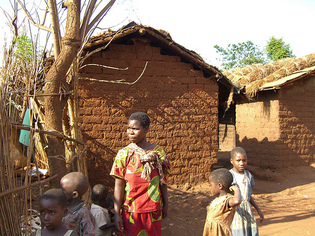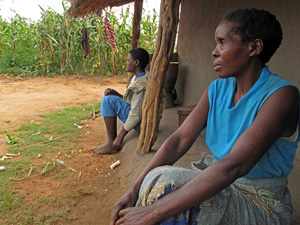About 57 in every 100 Malawians live in grass thatched houses some 49 years after independence, a study has revealed.
This statistic does not reveal what percentage of these houses leak, which is is the major concern apart from the fact the grass house structures tend to be temporary requiring rethatching every few years.
This is according to the Welfare Monitoring Survey 2011 conducted between September 2011 and February 2012 by the Agriculture Statistics Division of the National Statistical Office (NSO).
This is despite the country registering five years of robust economic growth averaging above seven percent between 2005 to 2010 a development that forced the previous regime to change the national flag to a full sun arguing that the country had been transformed beyond recognition.
The study, whose results were released in September 2012, was based on a random sample that covered 14,000 households drawn from all the districts of the country.
Housing and shelter, according to the report, are important indicators when it comes to assessing living conditions of a population.
“The most common material used by households for roofing their dwellings was grass, 57 percent, 42 percent of the households used iron sheets as roofing material.
“Further, 62 percent of households in the rural areas used grass for thatching, and eight percent of the households in urban areas used similar material. In addition, 90 percent of the urban households used iron sheets for roofing, and 37 percent of the rural households used the same material for roofing their dwellings,” read results of the survey.
In terms of floor material, the study showed that 64 percent of the main dwelling units were of smoothed mud and 34 percent were of smooth cement.
“Three quarters of urban households were made of smoothed cement and a third of the rural households were made of the same. Further, 68 percent of rural households were made of smoothed mud and 18 percent of urban households were made of similar material,” read the results.
It further said mud bricks and burned bricks were the most common materials used for walls by households, 28 percent and 54 percent respectively.
“Compacted earth was used by 12 percent of the households and one percent used grass. Urban households more often used burnt bricks as building material (61 percent) compared to rural households (54 percent),” reads the report.
The study further showed that 17 percent of households have no access to improved drinking water sources.
The improved drinking water sources, according to NSO, refer to piped water, tube well/borehole, a protected dug well, or protected spring.
Delegates to the conference jointly organised by The Malawi Ministry of Finance, the Reserve Bank of Malawi and the International Monetary Fund (IMF) on November 2 and 3, 2012 observed that high levels of growth since the mid-2000s have had little impact on the overall poverty rate in the country.
They observed that although poverty has fallen significantly in urban areas, it has risen in the rural areas where most of the population lives.
Commissioner of Statistics Charles Machinjili says the WMS 2011 is the sixth of a series that started in 2005 and is part of the concerted effort by NSO to provide relevant information for monitoring the welfare status of the people of Malawi.
“The survey is designed to collect the minimum amount of information necessary for the identification and classification of vulnerable groups of households within the society.
“It is the latest in a series of instruments that have been developed to provide policy-makers with household and community level information for policy formulation and evaluation,” said Machinjili.




No comments! Be the first commenter?